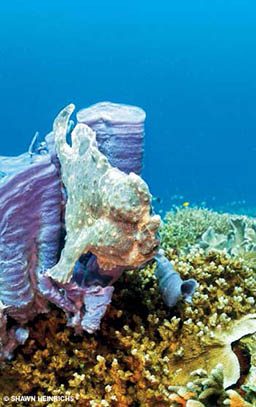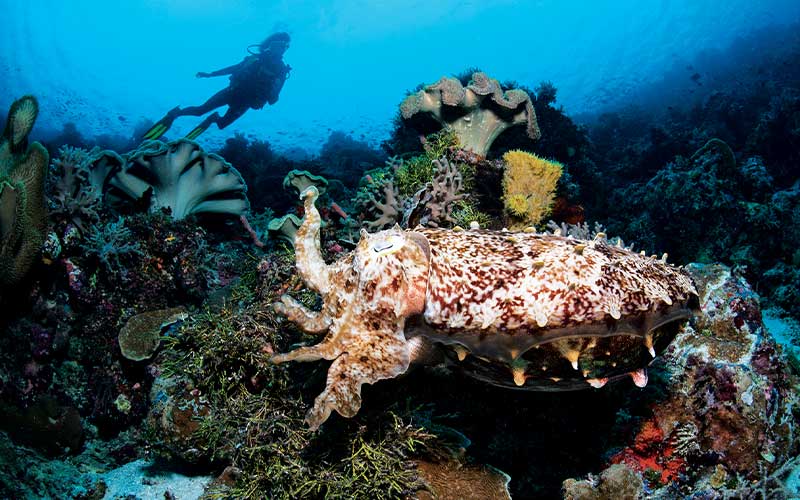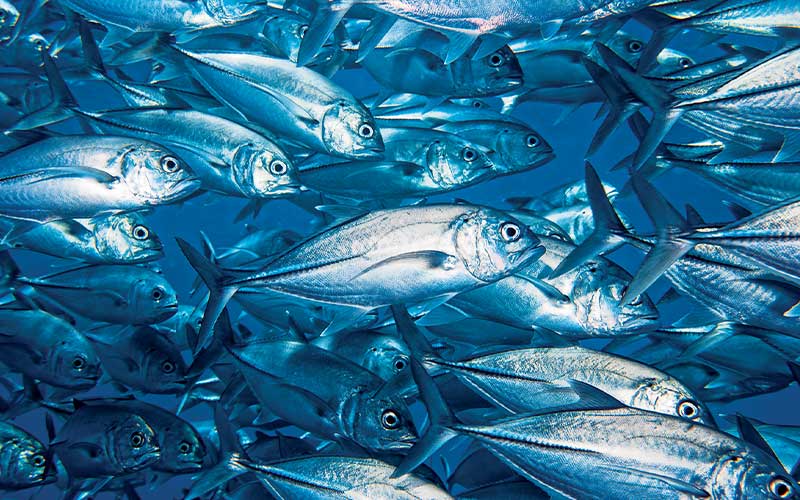The marine habitats we love are degrading rapidly. As important centers of biodiversity remain unprotected, it becomes increasingly likely our children will never experience the same abundance of underwater life we’ve enjoyed. Government protection of marine resources is spotty, and nongovernmental organizations are often overworked and underfunded. But as coastal communities are empowered to take active roles in safeguarding their local natural resources, grassroots marine protected areas (MPAs) can result.
By providing sustainable employment opportunities and injecting lease fees into local economies, these MPAs use ecotourism to enhance ocean protection. As these communities and private enterprises forge long-term, mutually dependent relationships, both gain constant reminders of the value of the MPAs. Here we take a closer look at four success stories.
Panabulan Sanctuary — Dumaguete, Philippines

In the Philippines, where dive tourism is a well-established industry, communities recognize the important role marine sanctuaries play in attracting divers and enriching local communities. Municipalities have established networks of small coastal sanctuaries that are off-limits to fishing and harvesting; designation of sanctuaries is at the discretion of each municipality’s mayor.
Ten years ago, Panabulan Sanctuary in Maayong Tubig (Negros Oriental) was established to protect an important stretch of healthy reefs. Seven years later it was expanded to include an area with large numbers of mandarinfish, and it now covers about 32 acres. Atmosphere Resorts has done an incredible job fostering community stewardship of the sanctuary’s reefs. Coral cover and coral health have noticeably improved. The area now teems with rare and exciting macrolife such as mandarinfish, frogfish, flamboyant cuttlefish, ghostpipefish and tiny lobsters. Turtles are also found in greater numbers, resting and feeding undisturbed in the protected waters.
Divers, snorkelers and swimmers pay entry fees that cover upkeep costs and salaries for guards. Other community members work as dive guides and resort employees; shared benefits ensure the long-term sustainability of these sanctuaries.
Misool Eco Resort Marine Conservation Agreements — Raja Ampat, Indonesia
Raja Ampat, the crown jewel of the Coral Triangle, is the epicenter of world marine biodiversity. More than 1,400 species of reef fish exist in this archipelago, which covers almost 18,000 square miles. In a sample area the size of two football fields, scientists discovered more than six times as many coral species as live in the entire Caribbean Sea. Charismatic marine life including giant manta rays, reef sharks and dolphins are frequently encountered as are tiny creatures such as frogfish, pygmy seahorses and flasher wrasse. Until very recently, this area was exploited for the very resources that make it so spectacular.
In 2005 Misool Eco Resort partnered with the local community to stop rampant shark finning and unchecked fishing in South Raja Ampat. These activities — perpetrated by outsiders — devastated local fishing grounds and threatened the health of some of Earth’s most biodiverse reefs. Misool Eco Resort secured a lease to establish a marine conservation agreement (MCA) that covers 140 square miles in which all fishing and other extractive practices are strictly prohibited. In 2010 the partners expanded the agreement to create a 160-square-mile MCA in the nearby Daram Islands. In concert with the Nature Conservancy and WildAid, Misool Eco Resort is now working to establish and enforce a series of MCAs in southern Raja Ampat.
Regular, locally staffed patrols have eliminated shark finning, turtle hunting, illegal fishing and all other extractive practices inside the MCA. The entire reef ecosystem is now protected, and previously depleted stocks of vulnerable marine species are rebounding.
These MCAs ensure the long-term health of fish stocks and the reef. Spillover to surrounding waters creates abundant, sustainable catches for villagers. Communities also benefit directly from lease income, municipal projects and employment. Thanks to this partnership, local people are active stakeholders in a system that guarantees long-term preservation and shared enjoyment of their natural heritage.
Wakatobi Collaborative Reef Conservation Program — Southeast Sulawesi, Indonesia
The United Nations Educational, Scientific and Cultural Organization (UNESCO) recently designated Indonesia’s National Marine Park as a World Biosphere Reserve; it is considered one of the most biodiverse marine ecosystems on earth. In 1997 Wakatobi Dive Resort joined with local leaders to establish the Collaborative Reef Conservation Program. The program now includes 17 communities and covers 12.5 square miles of what are now the best-protected reefs within the National Marine Park. A diverse array of creatures both great and small — from whales to pygmy seahorses — is found here.

Fishermen now report better catches at the perimeter of the protected area than they previously saw in the entire area. As a result, the community has gained an appreciation for the benefits of reef resource management, which includes increased income from fisheries. Regular payments to the villages and job opportunities in the resort provide compelling economic incentives to the communities to preserve sections of the reefs for tourism purposes only.
Today, compliance with sanctuary rules is high, and the partnership between the resort and the local villages has proven to be one of the most successful and economical conservation approaches in the region.
Tulamben Marine Reserve — Bali, Indonesia
Bali’s Tulamben Bay sits at the convergence of deep-ocean currents from the Pacific and Indian oceans. The resulting upwellings of nutrient-rich waters foster an abundance of life on the reefs, walls and sandy slopes and the wreck of the Liberty.
In 1979 the local villages designated all of Tulamben Bay as an MPA, prohibiting fishing inside the bay. With great foresight, Tulamben recognized the potential for dive tourism to create sustainable and lasting employment opportunities for the community. The strategy paid off, and today Tulamben is home to resorts including Tauch Terminal and Paradise, which are considered two of Bali’s top dive destinations.

The area boasts an incredible array of life including reef sharks, humphead parrotfish, groupers, jacks, barracudas and unusual critters such as pygmy seahorses, nudibranchs, harlequin shrimp, ribbon eels, seadragons and stonefish. In addition, the Liberty wreck, just 100 feet from shore and in only 95 feet of water, is one of the most accessible and striking wreck dives in the world.
Shared Responsibility, Shared Benefits
Historically, local communities and their economies were often excluded from the benefits of tourism. A growing number of coastal communities are partnering with private businesses to establish local MPAs, the success of which hinge upon community participation and support. Engaging local people in conservation and ensuring they benefit directly from it creates sustainable conservation outcomes, protecting our marine resources for generations to come.
© Alert Diver — Q4 Fall 2012